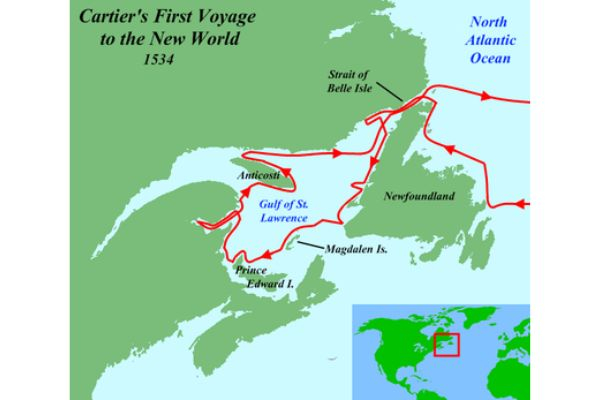Jacques Cartier made his first voyage to North America in 1534
King Francis I of France chose Jacques Cartier to embark on an expedition to investigate the Eastern Coast of North America following a number of prestigious recommendations, including one from Giovanni da Verrazzano. This is a highly significant truth about Jacques Cartier that changed his life. He had participated in numerous successful excursions in the past, and it is said that the King chose him for this mission as a result. The mission of the expedition was to find gold among other treasures, as well as to attempt to locate a safe route to Asia.
Leaving Saint-Malo on April 20, 1534. Jacques Cartier's voyage, which lasted around 20 days and involved two ships and 61 men, was mainly successful. Along with discovering Prince Edward Island and the Gulf of Saint Lawrence, the men also explored Newfoundland.
The mission of Jacques Cartier's first trip was to look for a route to the Pacific Ocean near Newfoundland and perhaps uncover some rich metals. He gave these locations new names or added them to his maps. On June 26, Cartier and his ships circumnavigated Newfoundland's north shore before sailing south through the Strait of Belle Isle and hugging the Magdalen Islands' coastline. They arrived at what are now the provinces of Prince Edward Island and New Brunswick three days later. Then, as he made his way westward, he crossed Chaleur Bay and arrived at Gaspé, where he came upon Iroquoian natives from the province of Quebec. They were there for their yearly seal hunt. On July 25, Cartier's ships sailed away following the planting of a cross and some trading and talks. Cartier kidnapped two of Donnacona's sons, an Iroquoian chief before he left. Following Anticosti Island's coastline and again traversing the Strait of Belle Isle, they made their way back to France.







